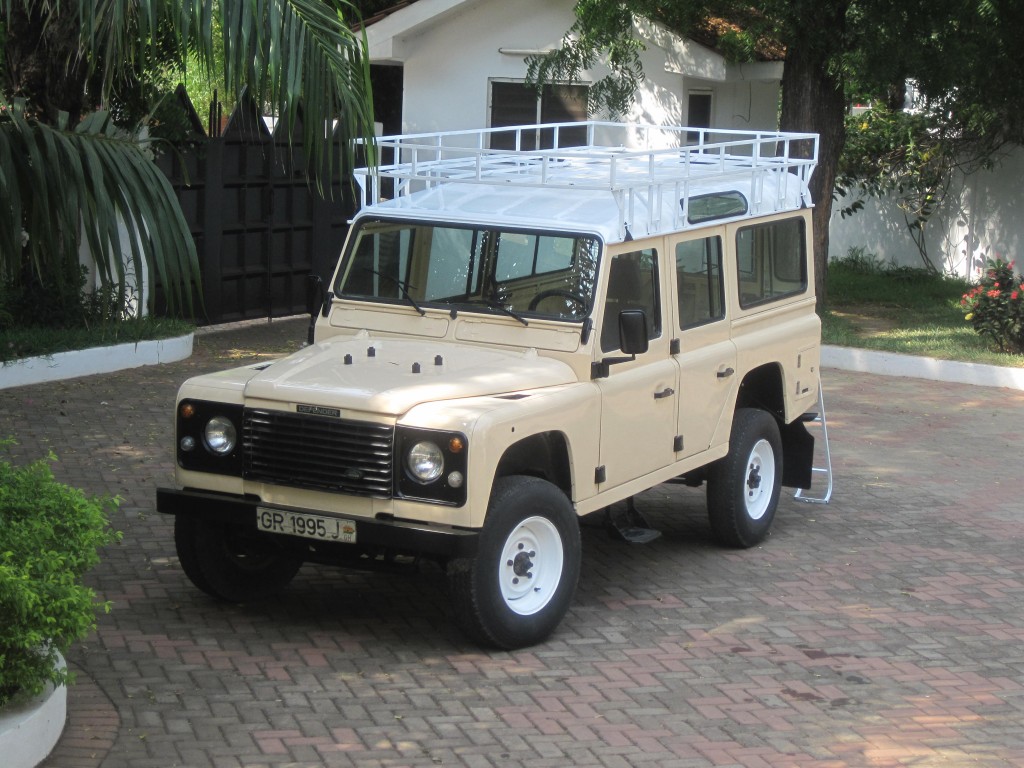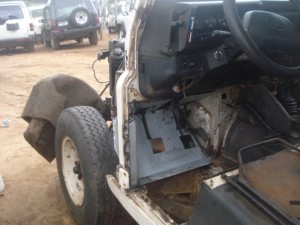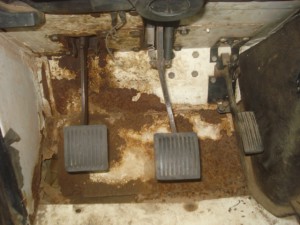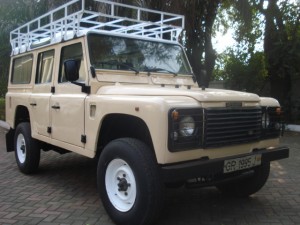It has now been a year since we took delivery of the an old Land Rover Defender in very poor condition with the intention of nursing it back to sound mechanical health and outfitting it for a trip somewhere in West Africa. It is a good time for a review, which in effect is a summary of the blog posts over the past year.
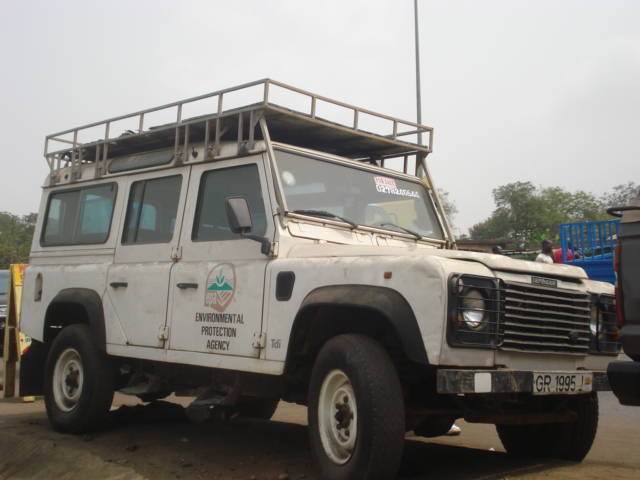
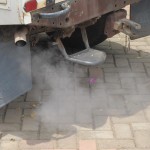
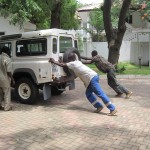
Mechanical: While it was sold as a “drivable vehicle”, the Defender we bought in February 2011 hardly met that criterion. The alternator was gone and the battery very low so it did not really start. The motor smoked badly and much of the running gear – clutch, brakes, wheel bearings, etc. , were badly in need of renewal. By June, within 3 months or so of purchase, we had replaced the TDI300 motor, all hoses, all the clutch and brake pieces, wheel bearings, track rod ends, front differential and front propshaft. The motor was a bit of a high stakes gamble, but it is one that so far seems to have paid off, because it is running so well and there are no leaks and I have not noticed any oil consumption. The first phase of the mechanical work also included installation of new heavy duty Biltstein shock absorbers all around and replacement of the original rubber bushes (the pieces that go between the chassis and all the suspension and axles) with high quality polybushes. As a result the ride is smooth and confident. The Defender seems to be able to perform in all the gear settings, high and low and two and four wheel drive, although we have yet to take it on any off-road tracks. Little things that did not work before, like the fuel gauge and hand brake, now work. Even the clock works.
Bodywork: The body was essentially sound, but with plenty of dings and dents in the aluminum body and rust at the base of the doors, a common affliction with Land Rovers where the aluminum body comes into contact with the steel door frame and water can be present. Particularly severely rusted were the foot wells, the drivers side right through to daylight. By September, within 6 months or so, the body had been completely restored, including installation of new foot wells and repair of any dents in the skin. The doors had been rehung with new hinge screws and any rusted door frames replaced. The bonnet latch which did not work now does, complete with a new functioning security cable from the interior. The broken rear “safari” door frame has been repaired. The windows that rattled no longer rattle. The door steps have been completely reconstructed. The front bumper has been straightened. The front grille has been (broken by someone at Opere’s and) repaired. The Defender has been completely cleaned inside and out, and rust removed from underneath. It has been repainted, and it is beautiful. We purchased and installed a new Defender decal for the front of the bonnet. Remaining bodywork includes the installation of the chequerplate aluminum panels on the fenders and bonnet and insertion of the new locks on the front and rear doors, and new Tdi 300 decals.
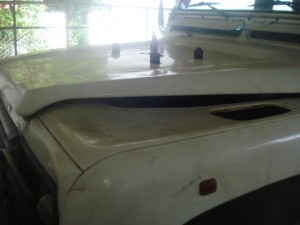
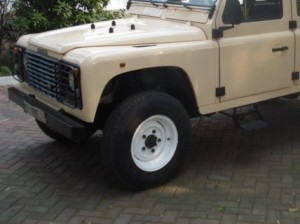
Air Conditioning: Within seven months the old air conditioning system that did not work had been replaced with an old air conditioning system that does work, sort of. This aspect does not inspire confidence and we may yet soon find we have to take advantage of those cute uber-functional vents that open an close in the bulkhead below the windscreen to keep us cool when the air conditioning system fails. I am rather sure it will, you get what you pay for and we did not pay very much.
Electrical: Within eight months the basic electrics mostly worked (lights, horn, wipers), and the contract is signed and parts procured for new lighting inside and out. Like the air conditioning the quality of the electrical work is a bit dubious and will require some careful monitoring to have Phase Two of the electrical completed properly, which includes the installation of a dual battery system and various accessories like the fridge (purchased in South Africa more than a year ago), fog and rear area lights.
Interior: The interior was worn and dirty, with the front seats on their second cover, consisting of old flour bags. Something which we did not really notice until now is the condition of the ceiling roof lining, which was taken out and stored at Opere’s Land Rover farm when the body work was being done. 15 years of road dirt and seasonal harmatan dust had left the light grey lining a dark shade of brown that spews dirt on slapping.
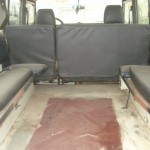
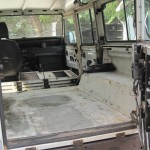
By December, within 10 months, the interior had been ompletely stripped, cleaned and repainted.
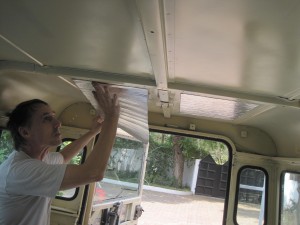
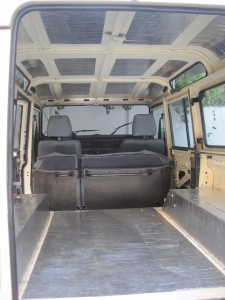
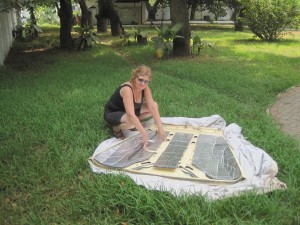
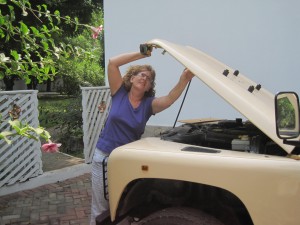
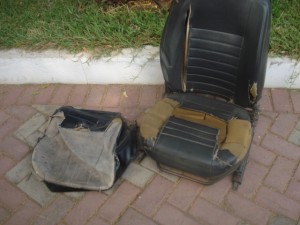
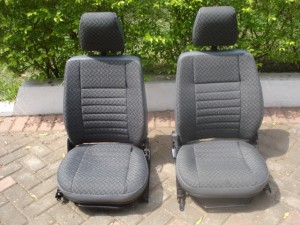
The vehicle has been soundproofed throughout, with material brought in from Canada.
The front seats have new foams and covers from Exmoor Trim, the front seats slide back and forth and the backs adjust. The back seats have new foam and covers locally done and the cargo area seats have been removed to make space for expedition gear storage.
We have also purchased other important bits and pieces, like the door locks, although those have yet to be installed. Removal of all the interior decor and seats is an achievement that is also worth noting – it took a lot of time and painstaking work, much of it done ourselves. do Having stripped it down not only allowed for a good clean paint job inside, it also made the interior soundproofing and carpeting easier. Just this week we have taken the final step in the restoration stage with signature of a contract to redo that dirty and ugly roof liner and install carpet in the front and back seats, with vinyl in the rear. With that the restoration/upgrading will be complete to our satisfaction.
One minor disappointment on the interior was the failure to find a used Discovery I back seat to replace the Defender bench-like back seat in order to acheive greater comfort for passengers. As an alternative I am going to try to customize the old Defender seat a few inches further back and lower down to gain leg and head-room, but I am not sure this is worth it. We are outfitting this vehicle for expedition and do not expect to carry passengers for very long once we hit the road. The best arrangement might be to to retain the 1/3 portion of the back seat split and devote the rest to expedition gear and storage.
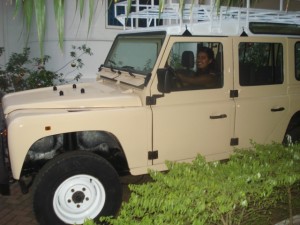
In terms of cost for all this, there is no question we spent more than what Opere wanted for a 1995 Defender 110 he had redone himself. However, there are some important improvements that justify the additional cost:
- The fact that the vehicle needed so much work means that more of the vehicle has probably been renewed than if I had purchased another that had been done by Opere.
- With a couple of important exceptions (A/C and motor) the parts in our restoration are all new, and most are genuine Land Rover or Original Equipment Manufacturer. We know exactly where they came from.
- The material and workmanship of the interior finish and upholstery is of much greater quality than what is done here.
- Our cost includes soundproofing, which does not appear to be done here at all.
- We have a very good roof rack and ladder, which will be a tremendous boon to organize for expedition.
- Preparation for and implementation of the painting is of a high quality, and the paint job is two tone, and includes the wheels and roof rack and ladder.
- It is also worth mentioning that one of the objectives of the DIY approach was to be able to become acquainted with the vehicle. I am still far from being a Landy expert, and there are whole systems that I do not really have a first-hand knowledge of, but I have been able to gain a great deal of familiarity with this vehicle, far more than I ever would have been able to had I purchased it rebuilt.
- Last and not least, over the past year managing the restoration ourselves has been a fabulous window on Ghana, offering an access to the day-to-day culture that we would not otherwise have had. I have met a whole bunch of everyday Ghanaians and been able to gain new understanding of how they think and work. I made many new friends.
There is no question I underestimated the amount of work this vehicle needed. I negotiated hard for the vehicle but I did not negotiate as hard as I should have, I think I took a sense of false confidence from Opere who referred me to the vendor Gomez. The EPA Defender had been driven hard, maintained poorly and stripped of many parts before it was sold. I knew it would be necessary to replace the engine and running gear like the clutch and brakes, but I did not expect to have to replace the front differential, or to be annoyed by the absence of small but very important things like the fuel sender unit, or the parking brake shoes (which Opere felt so ripped off about he actually “dashed” the parts to me). However, we probably now own the best 15 year old Defender in the country, and we are not finished yet. We have definitely raised the bar for Opere and his crew, this Defender seems to get the envious attention of everyone coming in to the shop with their own, which pretty much all pale in comparison.
It is now reasonable to say that the restoration portion of the project is pretty much complete. The focus now has to shift to all the extras required for expediton outfitting. We started that with our trip to South Africa in December 2010 before we owned the Defender, and came back with a fridge, stover burners and a bunch of other things.We now have to shift to the outfitting stage. There are things we have purchased and not yet installed (ie. fridge, chequerplate aluminum panels, dual battery isolator, camp gear) and lots more we have yet to purchase (roof top tent, camp table, awning, mobile storage system, water storage system, sound system, etc.) but most of that falls outside the scope of the restoration phas.e. Expedition outfitting will easily add between CAD 3,ooo and CAD 4,000 to the cost, and most of it will have to be (or already has been) imported.
We are going to have to pick up the pace to be able to be expedition- ready in six months. The internal storage system still has to be designed and installed, including potable water system. We will need a rooftop tent and awning. a camp table. a cookstove, and various other accessories. We have started to accumulate the gear, including the fridge we bought in South Africa last year. One more holiday in South Africa would certainly come in handy, there are literally dozens of supply places there, and not a single one here.
The task which I should have mentioned first is to obtain legal registration and insurance. All the shuttling back and forth between shops and more recently, just running errands, have been done quite illegally. I was stopped by a policemen recently, who told me to do up my seat belt, which I did, I did not have the heart to tell him the ends were just hanging off the sides of the seats without being bolted to anything. The seat belts are now reinstalled, the lights all work, and I have all the papers to be able to register it. Top priority now is to go to the Vehicle Licensing Authority to make it legal. Can’t wait to get those red DP plates on it. There is a backstory to that, but it warrants a separate post.
